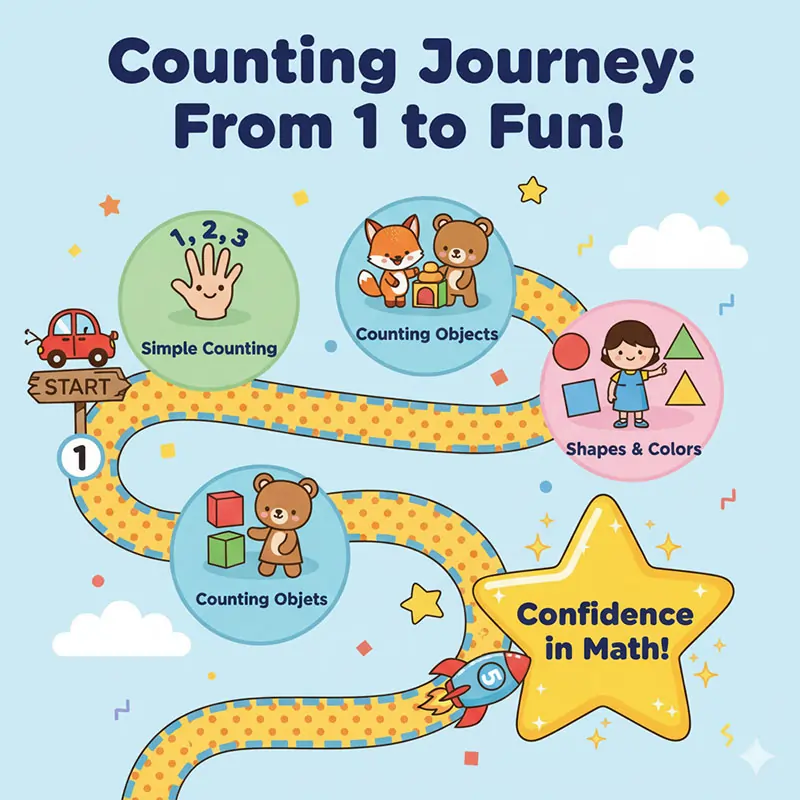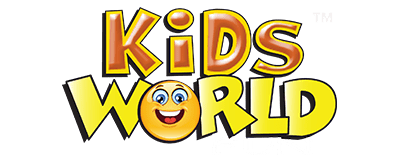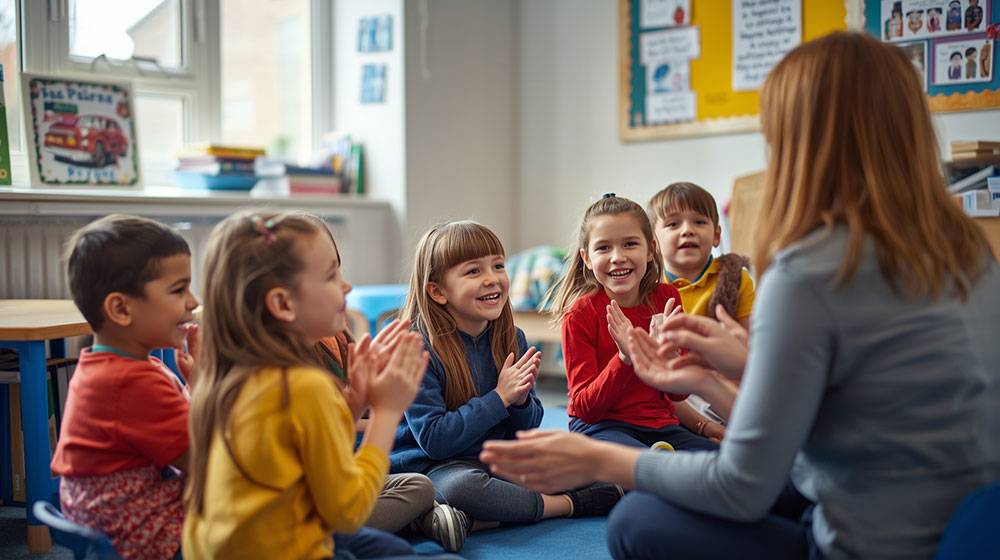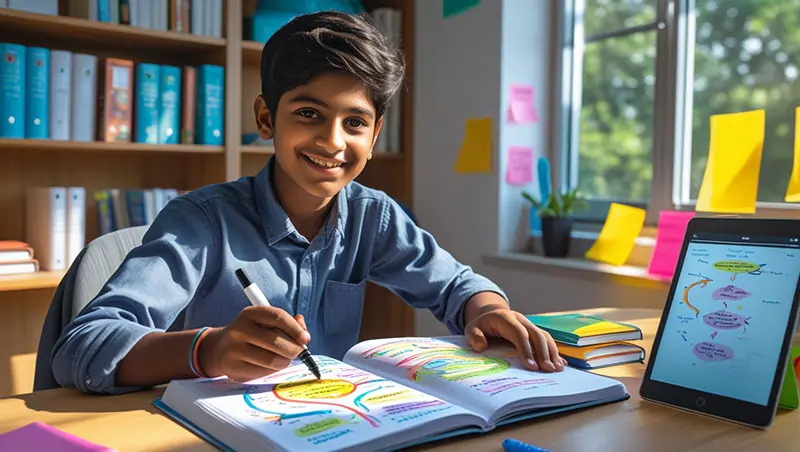Counting Made Fun: Preschool Math Activities for Early Learners
For preschoolers, math isn’t just about numbers — it’s about understanding the world through patterns, shapes, and relationships. Counting apples, sorting toys, or matching socks are all early math experiences that build critical thinking and curiosity.
1. Introduction to Early Math Skills
Ever watched a toddler stack blocks? They knock them over. Stack again. Knock over. Repeat twenty times. Adults see chaos. Kids are actually running physics experiments—testing gravity, balance, height limits.
That’s preschool math. Ages 3 to 5 learn through touching, dropping, sorting, and yes, occasionally throwing things. Abstract concepts mean nothing yet. “Five” as a word? Meaningless. Five crackers they can hold? Now you’re speaking their language.
Games, songs, hands-on mess—that’s how math clicks for this age. Not worksheets. Not lectures. Definitely not flash cards drilled like a pop quiz.
Here’s the uncomfortable truth: math anxiety starts insanely early. Preschool early. Kids absorb adult stress about numbers. “I was terrible at math” becomes a family curse passed down unconsciously. Making counting feel like play instead of pressure breaks that cycle.
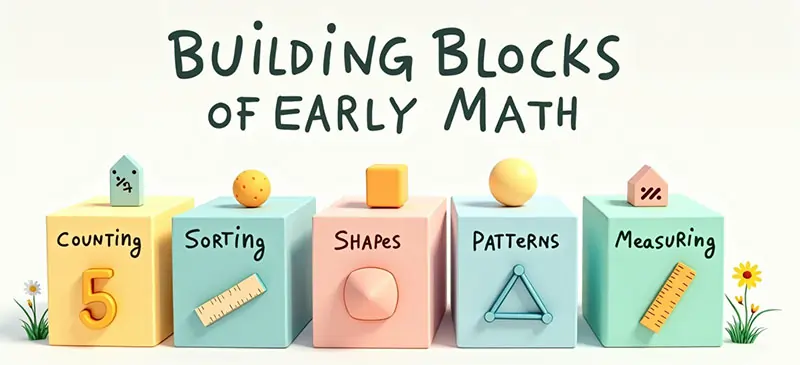
2. Importance of Counting and Number Sense
Counting isn’t just saying “one, two, three, four, five” in order. Parrots can do that. Real counting means understanding what those sounds represent.
Watch a kid who’s actually counting: they point carefully at each object once. They know “five” means This many things specifically. They grasp that the last number said tells you the total.
Compare that to a kid performing: randomly pointing while reciting numbers they memorized. They’re doing a trick, not math.
Number sense develops in stages:
- Numbers represent actual quantities
- “5” means five real objects, not just a sound
- More versus less makes sense
- Patterns and sequences become visible
Kids who build genuine number sense early? Addition and subtraction later don’t freak them out.
| Stage | Skill | Example Activity |
| Stage 1 | Counting aloud | Singing number rhymes (“One, Two, Buckle My Shoe”) |
| Stage 2 | Matching numbers to objects | Counting apples or toys |
| Stage 3 | Comparing quantities | “Which plate has more cookies?” |
| Stage 4 | Recognizing written numbers | Flashcards with digits |
| Stage 5 | Understanding simple addition | Counting blocks together |
3. Simple Counting Games and Songs
Music sticks in little brains better than anything else. Rhythm, repetition, melody—memory hooks textbooks can’t touch.
Songs that work:
- “Five Little Ducks”– Counting backward. Kids get invested in the story. When no ducks come back? Genuine preschool drama unfolds.
- “Ten in the Bed”– Subtraction disguised as bedtime story. “Roll over” becomes hilarious when kids actually roll.
- “One, Two, Buckle My Shoe”- Sequencing through relatable actions. Preschoolers relate to shoes and doors.
Games that actually engage them:
- Number Hunt: Hide numbered cards everywhere. Kids find them and arrange in order. Movement plus discovery plus sequencing. Way better than sitting.
- Bean Bag Toss: Label buckets 1–5. Toss bean bags, count what lands where. Develops counting AND motor skills. Burns energy too—exhausted kids sleep better.
- Snack Time Math: Hand out grapes or crackers. “Count them before eating.” Suddenly counting has delicious motivation. Works every time.
These mix movement, sound, learning. Kids stay engaged because they’re not trapped at tables being talked at.
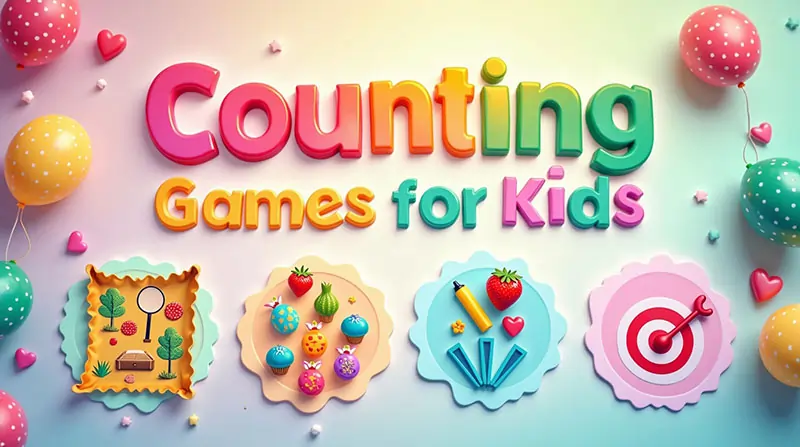
4. Hands-On Worksheets (Dots, Pictures, Matching)
Worksheets get trashed a lot. Sometimes fair. But the right worksheets—visual, tactile, engaging—help preschoolers see numbers as real things.
What works:
- Dot Counting: Kids count dots, trace the matching number. Connects quantity to symbol while developing finger control.
- Picture Matching: Three apples drawn here. The number “3” over there. Draw a line connecting them. Visual brain meets symbol brain.
- Number Tracing: Dotted lines showing how to form numbers. Hand-eye coordination plus symbol recognition simultaneously.
- Sticker Math: Count stickers, stick them on pages according to numbers. Tactile beats passive every single time.
These connect seeing, saying, writing numbers. Preschoolers need all three. Just hearing “three” doesn’t cut it. Just seeing “3” doesn’t either. Experiencing three actual objects PLUS hearing the word PLUS seeing the symbol? That creates real understanding.
5. Shape and Color Identification
Shapes and colors aren’t just art topics. They’re math fundamentals. Classifying, comparing, recognizing patterns—all math skills developed through shapes and colors.
Common shapes kids learn:
Circle, Square, Triangle, Rectangle, Oval, Star, Heart
Shape Activities:
- Shape Hunt: “Find me something circular!” Kids suddenly notice plates, clocks, wheels everywhere. Abstract shapes become concrete objects.
- Shape Sorting: Paper cutouts or toys sorted by shape or color. Classification skills—foundation for logic.
- Color-Shape Bingo: Call out “Red Circle!” or “Blue Star!” Listening plus visual recognition plus quick thinking combined. Shape and color work develops visual discrimination—noticing differences between similar things. That skill transfers directly to reading later. Kids who differentiate circles from ovals can differentiate “b” from “d” easier.
| Shape | Example Object | Color Example |
| Circle | Ball | Red |
| Triangle | Pizza slice | Yellow |
| Square | Box | Blue |
| Rectangle | Book | Green |
| Star | Decoration | Gold |

6. Parent Tips for Home Learning
Parents determine whether kids see math as normal life stuff or scary school stuff. Good news? You don’t need fancy educational products. Just attention and creativity.
💡 Tips to Make Counting Fun at Home:
- Count everything constantly: Stairs while climbing. Toys during cleanup. Snacks before eating. Steps to the mailbox. Numbers become descriptive tools, not threats.
- Use routines: Setting table? Count spoons, napkins, plates. Folding laundry? Match socks by pairs—one-to-one correspondence happening right there.
- Turn chores into challenges: “Find all the red clothes” transforms boring laundry into a counting hunt plus color classification game.
- Read counting books: This helps you count, like Chicka Chicka You can turn numbers into story characters by adding 1, 2, 3, or 10 black dots. Context helps ideas stick.
- Use nature: When you walk, count flower petals, tree leaves, and sidewalk cracks. Nature gives us an endless supply of free math stuff.
- Praise process, not perfection: “You counted each one carefully!” is better than just “Good job.” Specific praise encourages effort more than accuracy.
Math that is a part of everyday life helps you learn and feel more sure of yourself. And those “count the stairs” routines will be fond memories years from now.

7. Sample Math Activity Sheet Ideas
Creative activity sheets for classroom or home:
| Activity Type | Description | Learning Goal |
| Count the Fruits | Color and count apples, bananas, oranges | Number recognition |
| Match the Animals | Draw lines between animals and number groups | Counting & matching |
| Trace and Write | Trace numbers 1–10 | Fine motor & writing |
| Find the Shapes | Circle all triangles or squares | Shape recognition |
| Number Maze | Follow numbers in order to reach a goal | Sequencing |
These combine visuals, repetition, engagement. Math becomes enjoyable instead of just educational.
❓ 8. FAQs About Preschool Math Activities
Q1. When should my child begin learning to count?
Around the age of 2 or 3, most kids can read numbers and count small groups of 1 to 5 objects. But every kid’s different. Don’t stress if yours takes longer—pressure backfires hard at this age.
Q2. How can I help my child if they struggle with counting?
Ditch worksheets. Use hands-on stuff—blocks, toys, snacks. Make it physical and fun. Abstract thinking develops later. Concrete objects now.
Q3. Are online math games useful for preschoolers?
Simple games focusing on counting, shapes, matching can help—but limit to 15–20 minutes daily. Real objects beat screen versions for this age group.
Q4. How often should preschoolers practice math?
Daily beats marathon sessions. 10–15 minutes of playful math consistently creates real progress. Short and frequent wins over occasional and long.
Q5. What materials do I need for preschool math at home?
Crayons, blocks, stickers, paper cups, household objects. You probably already own everything necessary. Expensive toys aren’t required.
9. Conclusion and Free Printable Worksheets
Early math thrives on exploration, play, imagination. When counting feels like games instead of chores, kids develop confidence and curiosity about numbers instead of anxiety.
Mix visuals, songs, stories, hands-on activities. Every number counted builds toward lifelong problem-solving skills. Sounds dramatic. It’s true though. Early positive math experiences shape attitudes lasting decades.
Download our Free Printable Preschool Math Worksheets Pack with:
- Count-and-color pages
- Number tracing sheets
- Shape and color sorting activities
- Matching and pattern games
With creativity, counting becomes your child’s favorite part of the day instead of something resisted. That shift—resistance to enthusiasm—makes everything else easier.
